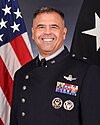The United States Armed Forces are the military forces of the United States. The armed forces consists of six service branches: the Army, Marine Corps, Navy, Air Force, Space Force, and Coast Guard. All six armed services are among the eight uniformed services of the United States.
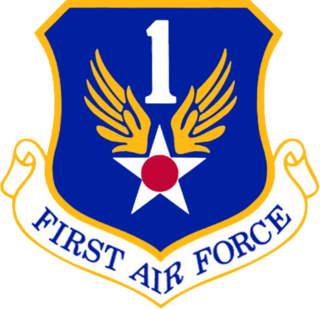
The First Air Force is a numbered air force of the United States Air Force Air Combat Command (ACC). It is headquartered at Tyndall Air Force Base, Florida. Its primary mission is the air defense of the Contiguous United States (CONUS), United States Virgin Islands and Puerto Rico. Since May 2022, it also provides the Air Force contribution to United States Space Command, as Air Forces Space (AFSPACE), including support functions for NASA human space flight.

The United States Space Command is a unified combatant command of the United States Department of Defense, responsible for military operations in outer space, specifically all operations 100 kilometers and greater above mean sea level. U.S. Space Command is responsible for the operational employment of space forces that are provided by the uniformed services of the Department of Defense.

The United States Indo-Pacific Command (USINDOPACOM) is the unified combatant command of the United States Armed Forces responsible for the Indo-Pacific region.

The Pacific Air Forces (PACAF) is a Major Command (MAJCOM) of the United States Air Force and is also the air component command of the United States Indo-Pacific Command (USINDOPACOM). PACAF is headquartered at the Hickam AFB portion of Joint Base Pearl Harbor–Hickam, Hawaii, and is one of two USAF MAJCOMs assigned outside the Continental United States, the other being the United States Air Forces in Europe – Air Forces Africa. Over the past sixty-five plus years, PACAF has been engaged in combat during the Korean and Vietnam Wars and Operations Desert Storm, Southern Watch, Northern Watch, Enduring Freedom and Iraqi Freedom.

The United States Army Space and Missile Defense Command (USASMDC) is the Army Service Component Command (ASCC) for United States Strategic Command and United States Space Command. It was established in 1985 as the Army Strategic Defense Command, responsible for ballistic missile defense. In 1992, it merged with Army Space Command to become Army Space and Strategic Defense Command. In 1997, it became an Army Major Command and was redesignated Army Space and Missile Defense Command.
A unified combatant command, also referred to as a combatant command (CCMD), is a joint military command of the United States Department of Defense that is composed of units from two or more service branches of the United States Armed Forces, and conducts broad and continuing missions. There are currently 11 unified combatant commands, and each is established as the highest echelon of military commands, in order to provide effective command and control of all U.S. military forces, regardless of branch of service, during peace or during war time. Unified combatant commands are organized either on a geographical basis or on a functional basis, e.g., special operations, force projection, transport, and cybersecurity. Currently, seven combatant commands are designated as geographical, and four are designated as functional. Unified combatant commands are "joint" commands and have specific badges denoting their affiliation.

The U.S. Marine Corps Forces, Pacific (MARFORPAC) is the Marine Corps service component command of U.S. Indo-Pacific Command. It is the largest field command in the Marine Corps and is headquartered at Camp H. M. Smith in Hawaii. The MARFORPAC area of responsibility covers more than half of the earth's surface.
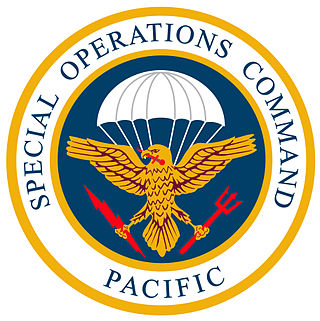
The Special Operations Command Pacific, known as SOCPAC, is a sub-unified command of the United States Department of Defense for special operations forces in the United States Indo-Pacific Command (USINDOPACOM) area of responsibility.

Terrence John O'Shaughnessy is a retired United States Air Force four-star general who previously served as the commander of United States Northern Command and as the commander of North American Aerospace Defense Command.

The United States Space Force (USSF) is the space service branch of the U.S. Armed Forces. Along with the U.S. Air Force, it is part of the Department of the Air Force, led by the secretary of the Air Force. Its military heads are the chief of space operations, who is one of the Joint Chiefs of Staff, and vice chief of space operations.

Bradley Chance Saltzman is a United States Space Force general who is the second and current chief of space operations. He served as the deputy chief of space operations for operations, cyber, and nuclear from 2020 to 2022. He is the first lieutenant general and the first general officer promoted into the Space Force.

Anthony Joseph Mastalir is a United States Space Force brigadier general who has served as the commander of the United States Space Forces Indo-Pacific since 2022. He previously served as commander of Space Launch Delta 30 from 2019 to 2021.

The United States Space Force is organized by different units: the Space Staff, the field commands, and the space deltas.

The United States Space Forces Central (USSPACEFOR-CENT) is the United States Space Force component field command to the United States Central Command. Headquartered at MacDill Air Force Base, Florida, it plans, coordinates, supports, and conducts employment of space operations across the full range of military operations, including security cooperation, in support of the combatant command's objectives. It was activated on 2 December 2022.

The Combined Joint Task Force–Space Operations (CJTF–SO) was a subordinate command to the United States Space Command. It was activated on 15 November 2022 and inactivated on 6 December 2023 following the standup of United States Space Forces – Space.
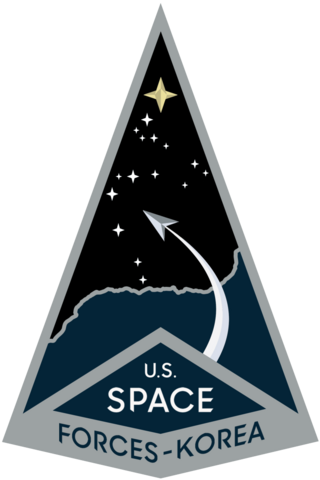
The United States Space Forces Korea (USSPACEFORKOR) is the United States Space Force component field command to the United States Forces Korea. Headquartered in Osan Air Base, South Korea, it plans, coordinates, supports, and conducts employment of space operations across the full range of military operations, including security cooperation, in support of the sub-unified command's objectives. It was activated on 14 December 2022.
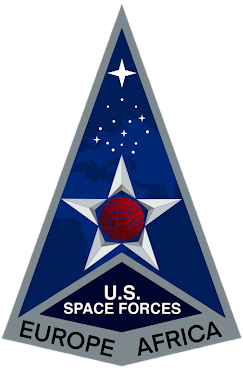
The United States Space Forces Europe and Africa (USSPACEFOR-EURAF) is the United States Space Force component field command to the United States European Command and United States Africa Command. It plans, coordinates, supports, and conducts employment of space operations across the full range of military operations, including security cooperation, in support of the combatant commands' objectives. It was activated on 8 December 2023.

The United States Space Forces – Space (S4S) is the United States Space Force component field command to the United States Space Command. It was formed by combining the Combined Force Space Component Command and Joint Task Force–Space Defense. Its commander also serves as the combined joint force space component commander (CJFSCC). It was activated on 6 December 2023.



